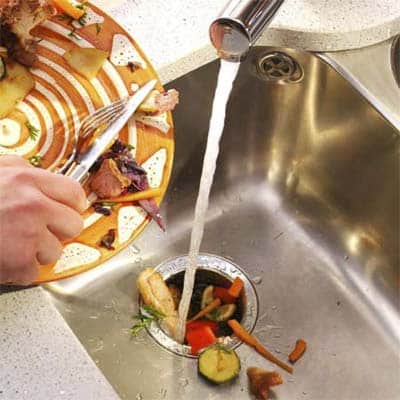It is normal for your drain to be clogged no matter how careful you are. However, how careful you are will determine when the drain might be clogged.
Grime and oil are the common cause of clogs in kitchen drains while soap scum and hair strands are the main cause of clogs in the bathrooms.
When your drain is clogged, water would flow slowly or not flow at all. Many home remedies and chemical drain cleaners have been recommended to unclog drains.
One of the home remedies recommended is baking soda and vinegar. Therefore, the question is, What is the ratio of baking soda to vinegar to clean a drain?
The most popular ratio of baking soda to vinegar to clean the drain is 1:2. If the baking soda is 1/2 cup, then the vinegar should be 1 cup. If the baking soda is 1 cup, the vinegar must be 2 cups. Another ratio is 1:1 which means both ingredients must be of the same measurement.
Some even apply the same measurement to the hot water. This means if the baking soda is two cups, vinegar would also be two cups; the same with the hot water.
Can I Clean my Drain with Baking Soda and Vinegar?
Baking soda has proven to be a good home ingredient used for so many things in the home. You can use it to make surfaces shiner. It can also be used to remove odor.
Baking soda and vinegar are a good combination for cleaning drains and not just unclogging drains. This is because it has been proven that it is safe to use baking soda and vinegar to clean a drain.
When it comes to unclogging drains, baking soda and vinegar can unclog almost all clogs even the ones caused by hair strands.
Baking soda is alkaline while vinegar is acidic. The combination of the two causes a reaction that will unclog the drain. Not only this, your drains will be free from odor after this method.
What is the Ratio of Baking Soda to Vinegar to Clean a Drain?
There’s no static ratio of baking soda to vinegar. Everyone comes up with whatever is okay for them. But the ratio that is popularly used by many is 1:2. If the baking soda is a 1/4 cup, the vinegar should be 1/2 cup.
This same ratio works no matter the cause of the clog. You can use more than 1/4 and 1/2 cups. But as you are doing so, the ratio used should be 1:2. The vinegar is always more than the baking soda.
Another popular ratio is 1:1. Every one of the ingredients is the same measurement. For example, If you are using a cup of baking soda, the vinegar must be a cup too. This ratio will also give you the desired result.
When using this drain cleaner, hot water is needed. There is no general rule to that but many pour two cups of hot water before and after the process.
How Do I Clean a Drain with Baking Soda and Vinegar?
To clean a drain with baking soda and vinegar, you will take very simple steps.
- The first step is to pour hot water into the drain.
- This breaks down grime in the drain so that the baking soda and vinegar will work well.
- You can decide to pour a dish soap in the hot water or in the drain first before pouring the hot water.
- The dish soap also helps to break grime in the drain.
- The next step is to pour baking soda down the drain.
- Your measurement is dependent on how severe the clog is.
- Measure the vinegar using any ratio and pour it down the drain.
- Cover the drain with the plug. You will hear a fizz down the drain.
- The reaction between the two ingredients will dissolve the clogs in the drain.
- Leave the mixture in the drain for 10 minutes or more,
- Then pour hot water down the drain again.
How Long Do You Let Baking Soda and Vinegar Sit in a Drain?
If the two ingredients are just for monthly cleaning of the drains, you can let them stay in the drains for up to 5 minutes before pouring hot water. If you want to unclog the drains, leave them in the drain for 10 minutes.
The baking soda and vinegar shouldn’t be left for long because the chemical reaction happens immediately after they come in contact with each other. So if you decide to leave the mixture longer than 10 minutes, it’s your choice.
Is Baking Soda and Vinegar Safe for PVC Pipes?
Baking soda and vinegar are not chemical drain cleaners so they are safe for PVC pipes. Although vinegar is acidic, its acidity is not as corrosive as sulphuric acid found in many chemical drain cleaners.
The only thing that might cause damage to the PVC pipes is the hot water. If your pipe can’t withstand the heat of the hot water, it is better not to use this method. Before using hot water, check if your pipes can withstand the heat.
Can You Leave Baking Soda and Vinegar in Drain Overnight?
Like I mentioned earlier, the reaction needed for the unclogging happens immediately the two ingredients come together. You should only leave them in the drain for 10 minutes. If the clog persists, try the method over and over again.
But if you feel the clog is severe, you can use this method and leave them overnight. By the next morning, pour hot water down the drain. Leaving baking soda and vinegar in the drains overnight wouldn’t affect your pipes also.
It’s just like Putting Salt Down the Drain at Night. Its better to consult a plumber for more advice.
Final Thoughts
To avoid damaging your PVC pipes by using chemical drain cleaners, you can try many home drain cleaners. One of them is baking soda and vinegar. This is a very popular home drain cleaner that can unclog almost all clogs. When using these ingredients, the ratio of baking soda to vinegar is dependent on you.
Also when you want to use baking soda and vinegar, let the drains be free of any chemical drain cleaner. Pour water down the drain well to be sure the residue of the chemical drain cleaner is not in the drain. The mixture of this home drain cleaner and chemical drain cleaner is dangerous.





